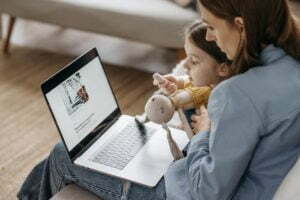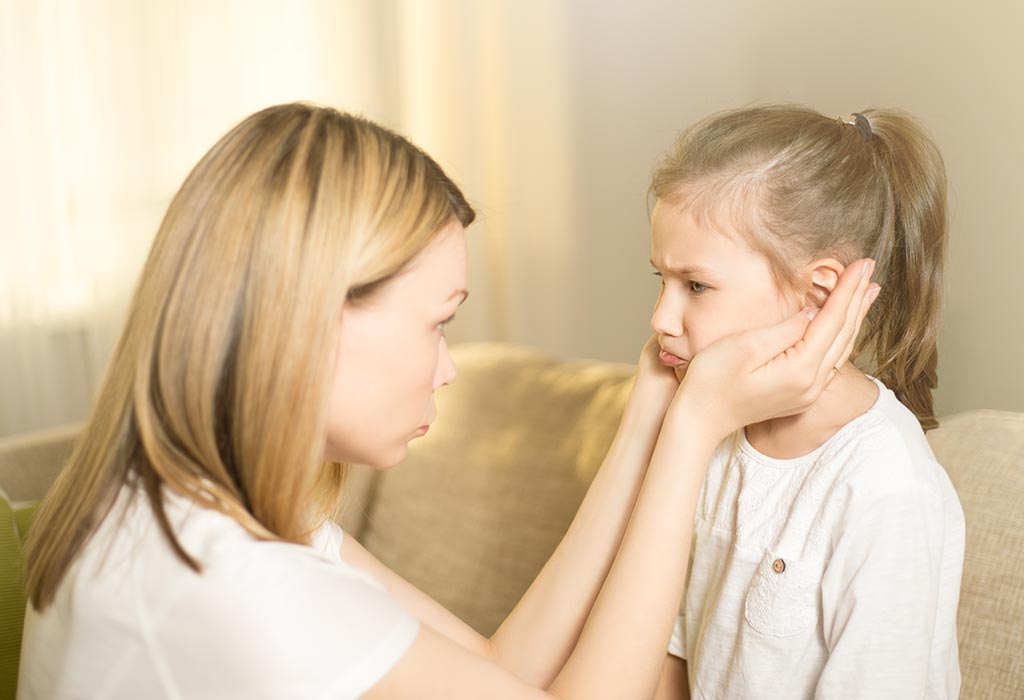Manners are important to make a good impression on others, as we say “First impression is the last impression”. Good manners are not only for social gatherings or public places, they are important at home too. Children should imbibe basic etiquette in their daily lives, no matter where they are or who they are with. This will enhance their personality.
Though there are a lot of good manners to be learnt, table manners are important lessons for children to make the practice of eating with family and others more pleasant and sociable.
Therefore, Podium School presents you with the ultimate go-to guide to help your child learn some impeccable table manners and etiquette. We believe that etiquette on the table is the etiquette which goes a long way. Check out these tips to aid your child incorporate these good manners.
Come to the Table Clean
This being the first step of the manual, parents should teach kids to wash their hands before and after any meal. It is not only a healthy habit but also shows respect for others at the dining table.
No Electronics
Parents should encourage children to consider mealtime as bond-building exercise with whom they are breaking their bread with. It is the time to socialize with other people, besides dining with them.
Discourage your child from engaging in electronics such as video game consoles, phones and tablets. Entreat them to enjoy the surroundings and the people connected with the food. Kindly explain to them that they can play with their devices after they are done with eating- this is to show appreciation for your dining companion’s presence. Teach the kids that using electronics at the table is not only disrespectful but also a sore loss of the opportunity to communicate.
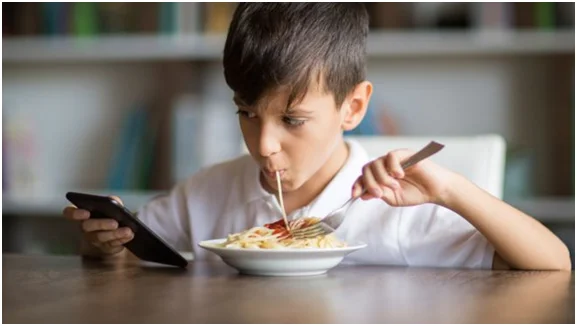
A gesture of gratitude for sharing food with them, not being distracted with electronics is an excellent table manner for kids. This premier etiquette has symbolic and emotional relevance to your child’s behavior while they are in company.
Chewing with a Closed Mouth
Food looks good only on the plate, but never when you’re entertaining the people with the front-seat view of how it looks like while you bite, tear and grind it with your teeth. We know, we know- it’s not a pleasant sight.
Chewing with your mouth open is not only disturbing visually but also sounds grating to the ears. Gently remind your child every time if they forget this. Chewing only with your back teeth and slowly, helps you keep your mouth closed. Take small bites in the beginning and once you master it, try eating larger bites as you normally do.
Avoid licking your fingers
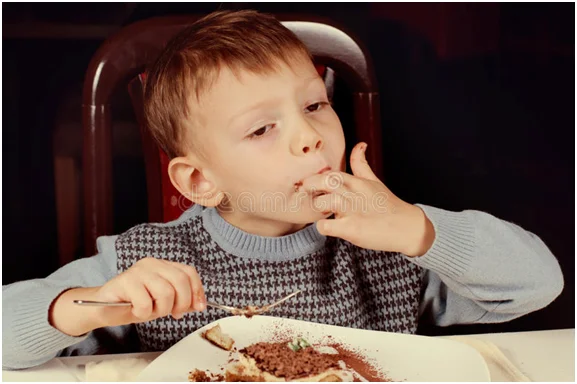
Even if the food is irresistibly good, ask your kid to avoid licking their fingers as it looks awful and is not a healthy habit. Gently ask them or silently gesture them to use the napkin on the table. This is one of those table etiquettes which will help children relish their food without making a huge spectacle of it.
Never speak with your mouth full
It never looks good when anyone speaks with food in their mouth. And it isn’t good, theoretically speaking. Firstly, the food might go into the wind pipe instead of the food pipe and may cause the person to choke. Secondly, it is not hygienic for the other person also because you may accidentally spit out some food particles. Encourage your child to finish chewing their food and then resume the conversation. Likewise, teach them to be patient with the other person who is eating while they speak.
Using the Tissue and the Napkins
At formal dining places, one should place the napkin after unfolding in their lap upon sitting. Ask your kid not to tuck the napkin into your collar or between the buttons of their shirt. It would be better to ask them to use it frequently during your meal to pat or blot their lips after they are finished eating. However, it is not necessary to do that after every bite.
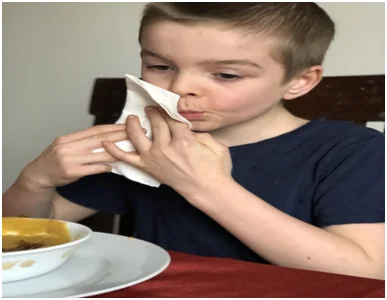
At home or an informal get-together, where napkins are not much in practice- ask your child to always pick a tissue paper and keep it next to their plate, making it handy in case of spills or whenever required. When leaving the table, place the napkin or tissue to the left of the plate.
Using the napkin is one of those table manners which will become natural to children after practicing the same at various situations.
Hold your cutlery correctly
Holding the cutlery is one of the universal table manners irrespective of the place and the time of the meal. Check out these tips on the right way to handle cutlery.
- Hold the fork in your left hand, the tines pointing downward and index finger towards the back of the fork.
- Hold the knife in your right hand, index finger extended along the top of the blade and thumb underneath.
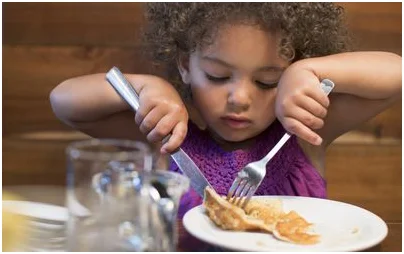
Now, spear the bite to be eaten with your fork, cut it with the knife and lift the bite to your mouth gently.
It takes some time to get accustomed to it, but when your kid gets the hang of it, this table etiquette becomes an inseparable part of their life.
After they are done eating, children can place their fork and knife at the center of the plate. The fork should face down, which indicates the server that the meal is finished.
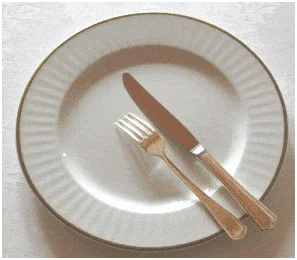
Pacing with Fellow Diners
Ask your children to begin only after elders or the host have begun eating. Pacing themselves accordingly with the other diners is a table etiquette which will help children manage time as well as their own digestive systems. This is because eating too fast or too slow might lead to overeating and even choking.
Though, sitting for a longer time at a dinner table can be challenging for some kids, they can be accustomed to eat fast. Having smaller portions will also help at the beginning.
Avoid Stuffing Your Mouth
In order to finish quickly, children tend to wolf their food down. One way they can practice pacing is by putting down their forks between the bites. They can even put their hands on their laps while they are chewing.
‘Can You Please Pass This?’
Never lean over the table to access an out-of-reach dish. If children ask for refills or someone to pass something, teach them to start the request with ‘Please’ followed by a ‘Thank You’ to regard the server.
Take Part in Those Conversations
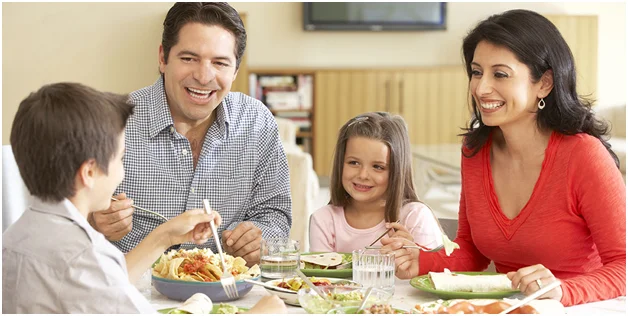
Parents should decide on having at least one meal a day with the whole family being present. Eating together can be valuable especially for kids. Special efforts should be made to have discussion-oriented conversations, to distract children from their gadgets and to give them confidence in expressing themselves..
Final Thoughts
Learning these basic dining etiquettes is not Rocket Science. Make sure that as a parent, you are easy, but firm with the children. Let the little one follow your lead at the table first and they will be emulating your good habits in no time. Table manners will be a breeze, given that children practice them regularly.
Check out these reads to enjoy the parenting adventure with Podium School’s parenting and personality development advice!
Share with your friends




